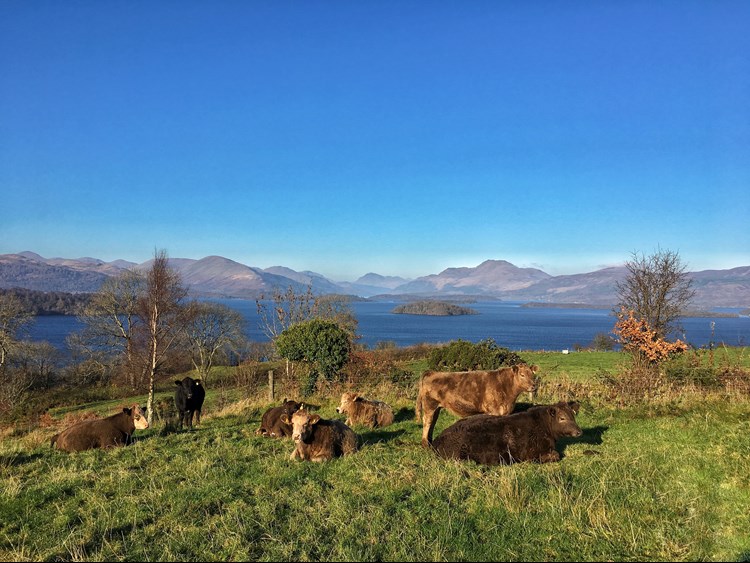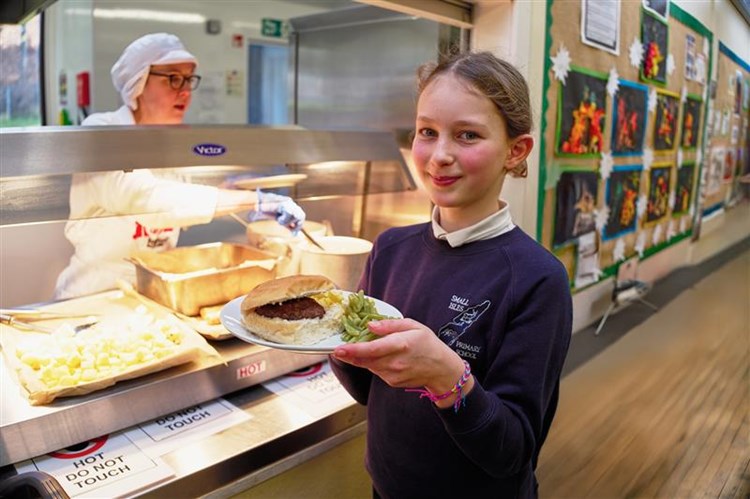New research on climate-friendly diets
A new report from Food Standards Scotland (FSS) and the University of Edinburgh (UoE) has reignited what can often be a polarising debate around climate friendly diets.
The study follows on from UK Climate Change Committee (CCC) recommendations that average meat and dairy consumption should decline by 20% by 2035, rising to 35% in meat by 2050 compared to 2019 levels.
The FFS/UoE research specifically modelled the impact of reducing meat and dairy on nutrient intakes amongst children and young people, in addition to the impact it would have on greenhouse gas (GHG) emissions.
Farming industry figures have been quick to comment on the report, emphasising the importance of red meat in a balanced diet. And while the findings certainly back that up, there is, as always, more nuance and complexity in the detail of the report.
What did the study find?
The study concludes that reducing meat and dairy intake by children and young people would help meet climate targets, as well as the Scottish Dietary Goals, but without replacement with other nutrient rich foods, it may worsen existing nutrient deficiencies.
All of this is based on current dietary patterns, and there are some interesting insights into what our children and young people are eating.
It found 90% consume meat and 99.6% dairy. And within that 90% meat consumption statistic, 42% was white meat, 39% processed meat and 19% red meat.

Those living in more deprived areas were more likely to consume white meat, most of which was accounted for by chicken nuggets or similar products. Interestingly, this prevalence of white meat aligns with the nutritional regulations for school meals, which limit the amount of red and red processed meat which can be served across the menu. Since these parameters were introduced, there’s been a noticeable increase in white meat – particularly chicken – on school menus. This increase in chicken consumption reflects a pattern across wider society, and carries environmental and welfare risks.
The FSS/UoE report modelled a range of scenarios for reducing meat and dairy. The results found that GHGs associated with diets of children and young people could be reduced by up to 28% by reducing meat consumption.
In terms of the Scottish dietary goals, the study found that replacing meat and dairy with pulses and legumes, vegetables, oily fish or chicken could increase the percentage meeting energy density, total fat, saturated fat, fibre and salt requirements. However, meat and dairy are currently a major source of nutrients for children and young people, and the study found that replacements could not mitigate all negative impacts from reducing meat and dairy consumption, such as reduced zinc, iodine and calcium.
This again highlights the importance of a nutritionally balanced diet.
How does this relate to Soil Association’s work in Scotland?
One of the key takeaways of the study from a Soil Association Scotland perspective was the line that “significant improvements are needed to the overall diets of children and young people alongside reductions to meat and dairy – ensuring benefits to both health and planet.”
This reflects the position we have taken on this issue for several years now, that the climate, nature and dietary health crises are interlinked, and that shifting to healthier and more sustainable diets – in line with dietary goals – can be part of the solution.
Through our Food for Life Scotland programme, we have long been committed to improving diets while delivering on environmental and sustainability objectives. The Food for Life Served Here standards provide caterers with a framework to serve meals with more vegetables and pulses, limit Ultra Processed Foods (UPFs) and undesirable additives, and serve less but better meat.
All meat served on Food for Life Served Here menus is UK farm assured, which includes Quality Meat Scotland as a qualifying scheme . There are also incentives at ‘Silver’ and ‘Gold’ levels for caterers to use organic products and higher welfare pork and poultry products, such as RSPCA Assured.
Increasing portions of vegetables and pulses and focusing on high quality, high welfare meat can help to limit the impact on climate, biodiversity and human health, while also helping caterers meet NHS recommendations that a healthy balanced diet should include plenty of vegetables and fruit.
We have also demonstrated the benefits of growing and eating peas – a highly nutritious protein – through our Give Peas A Chance! partnership project. This initiative focused on incorporating organic dried split peas into school menus in Aberdeen City Council (and now Moray and Highland Councils too), delivering a range of benefits such as improving soil health as well as children’s health.
And we are working on another partnership pilot with schools in Argyll and Bute Council on Islay and Jura to get local wild venison onto the school menu. This project again delivers positive health outcomes whilst contributing to sustainable land management.

How does this link to Scottish policy?
The publication of the FSS/UoE report is timely, given the Scottish Government is close to finalising the first National Good Food Plan and is due to produce a new Climate Change Plan update in the coming weeks.
While the draft National Good Food Plan did not go as far as specifying what a climate friendly diet looks like in Scotland, it did set out clear outcomes on sustainability and net zero – as well as promoting a physically and mentally healthy population.
And while little progress has been made in the past two decades to meeting the Scottish Dietary Goals, the Eatwell Guide provides a clear pathway for how Scottish produce fits into a balanced diet.
There is an opportunity now to provide a coherent policy mix that addresses how we use our land, how to support our farmers and crofters to transition to climate and nature friendly agriculture, and how to enable a shift to healthier and more sustainable diets.
Final thoughts
Previous research from the University of Edinburgh has found that if we all reduced our meat consumption according to existing dietary guidance, we could make significant progress towards climate change targets. However, given the poor state of current diets, a blanket approach may have negative impacts on some sections of the population.
This latest research underlines that point, particularly focused on nutrient requirements of children and young people.
So, the overall message must be to focus on improving and re-balancing diets. As things stand, there is certainly room for improvement when it comes to fruit and vegetable intake. Figures published last week revealed that just 11% are eating the recommended five a day, down from 20% in 2021.
The debate over climate friendly diets will no doubt rumble on, but these studies are a welcome reminder that these are complex issues that require a nuanced and balanced response.
Explore how our work is shaping a more resilient food system in Scotland.


